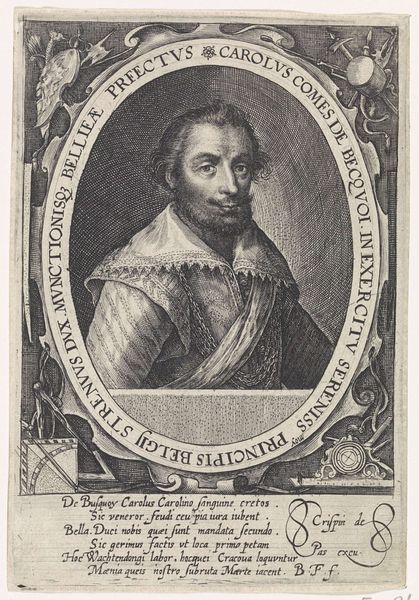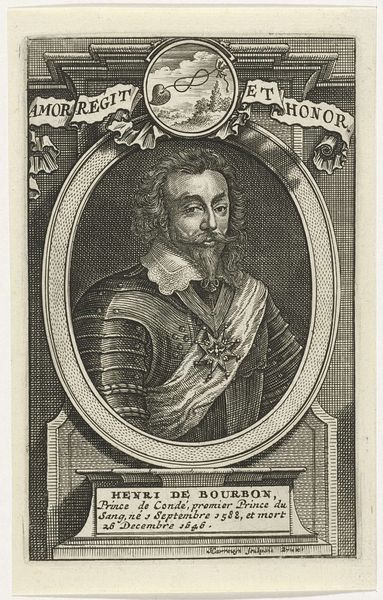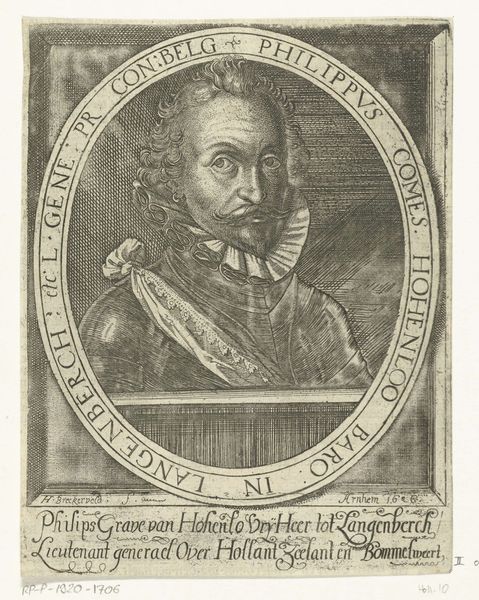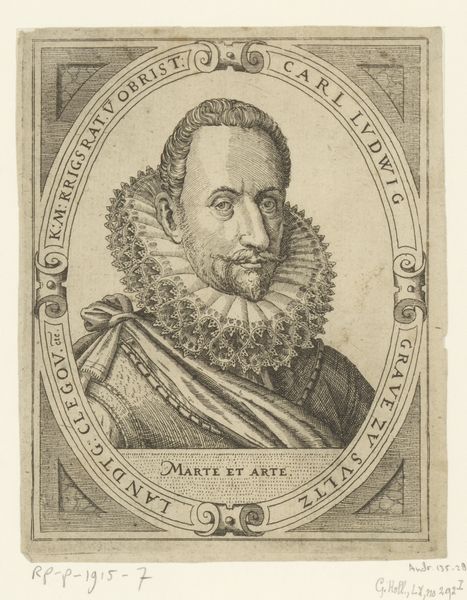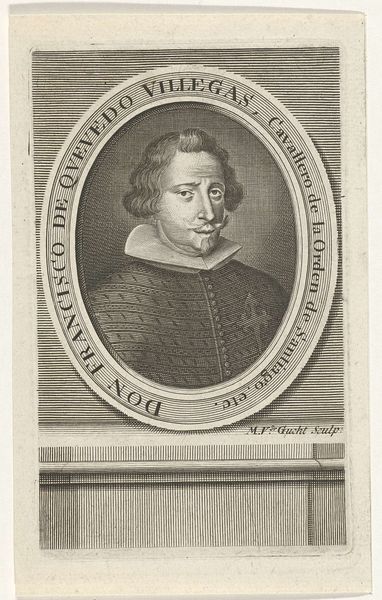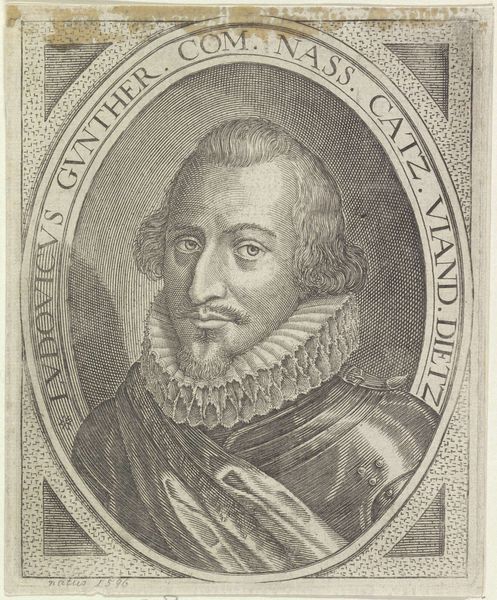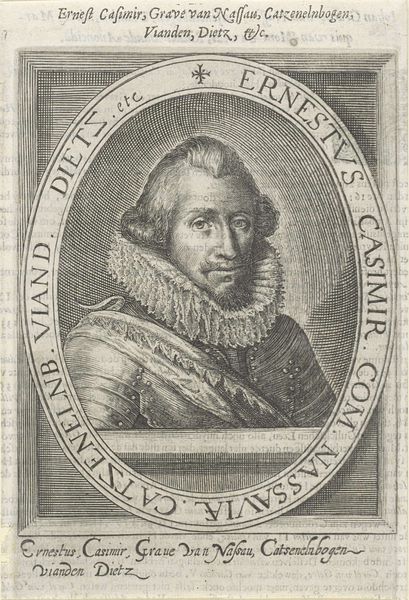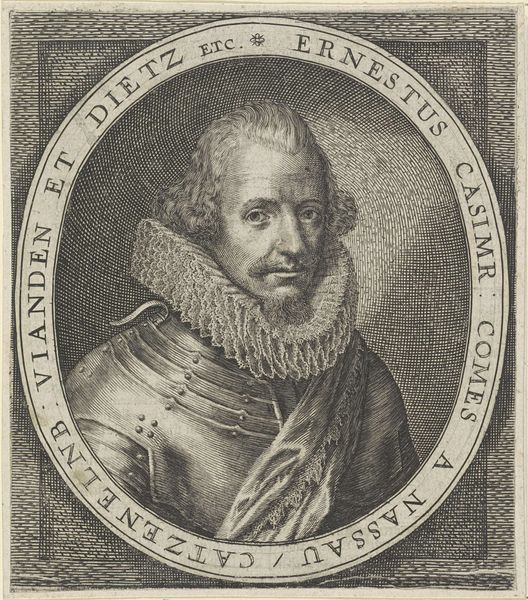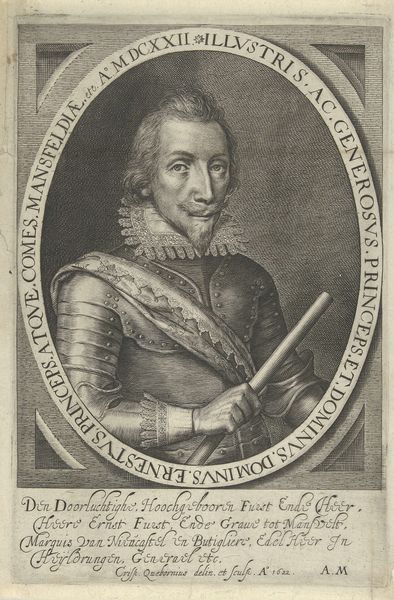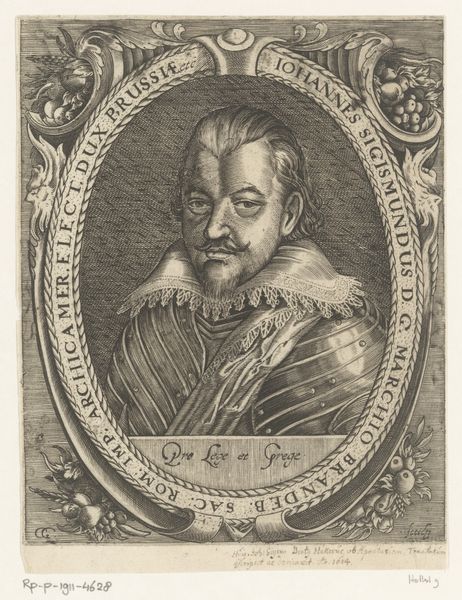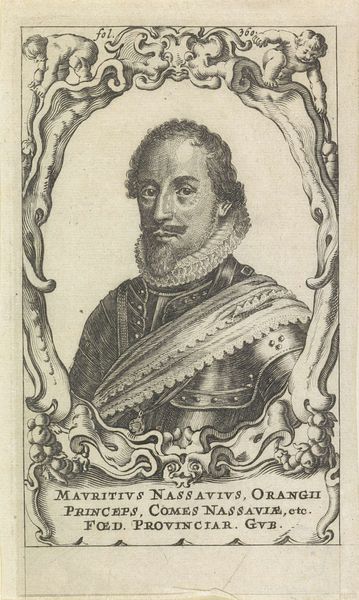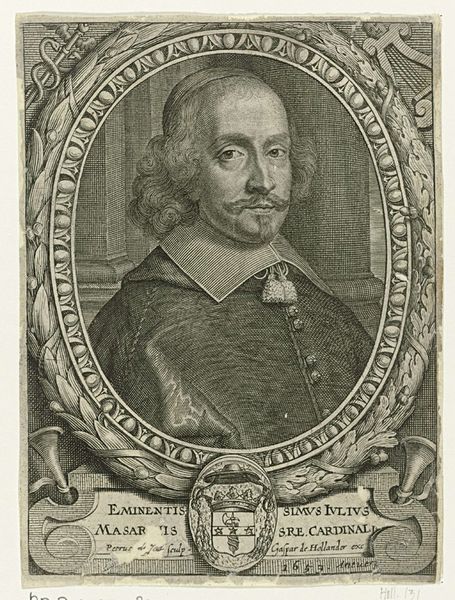
Portret van Charles-Bonaventure de Longueval, graaf van Bucquoy 1601 - 1644
0:00
0:00
print, engraving
#
portrait
#
baroque
# print
#
engraving
Dimensions: height 147 mm, width 101 mm
Copyright: Rijks Museum: Open Domain
Curator: Here we have a striking portrait of Charles-Bonaventure de Longueval, Count of Bucquoy, dating from the period 1601 to 1644, a print now held in the Rijksmuseum collection, made with an engraving process by Balthasar Florisz. van Berckenrode. What's your initial reaction? Editor: There's a stillness to it. The crisp lines and the way the engraver used shading – it gives him a remarkable presence despite the relatively small scale. Almost feels austere, yet there's something very elaborate happening in the rendering of the ruff and his garb. Curator: The ruff is certainly an important visual element. That stiff collar wasn’t merely decorative, it signified status and wealth. The act of constructing and maintaining that ruff would have been a substantial undertaking involving specific materials, labor, and skills. Even the black ink becomes significant when viewed through that lens. The material tells the story of the social context. Editor: Exactly! And more than social context, it points to personal identity. Notice the detail within the border - weaponry, but also architectural instruments. Those speak of both his military achievements and his aspirations, the images working in tandem to project power, perhaps even a sort of cultivated intelligence or calculated restraint. Curator: I find it fascinating how printmaking elevated portraiture during this period. A print like this was far more reproducible than a painting. One could imagine its proliferation as a powerful political tool. Editor: Certainly, especially as portraiture at that time still had to contend with established symbolism - something we find richly evident in other portraits from that era, but something that feels much more personal and individualized here. It’s almost as though the symbols and imagery of Baroque art serve here as both the celebration of an individual and a tool of political efficacy. Curator: So, when we look at this print, we're not just seeing an image of a man. Editor: No, it’s more than that: we are also engaging with a system of representation crafted from symbolic visual language. Curator: And brought into being via the laborious but reproducible materiality of the engraving process. It really makes you think about the distribution of power, wealth, and status in that historical moment. Editor: Indeed, quite a layered portrait, and one that sparks questions around both the man and the mechanisms that produced his image.
Comments
No comments
Be the first to comment and join the conversation on the ultimate creative platform.
